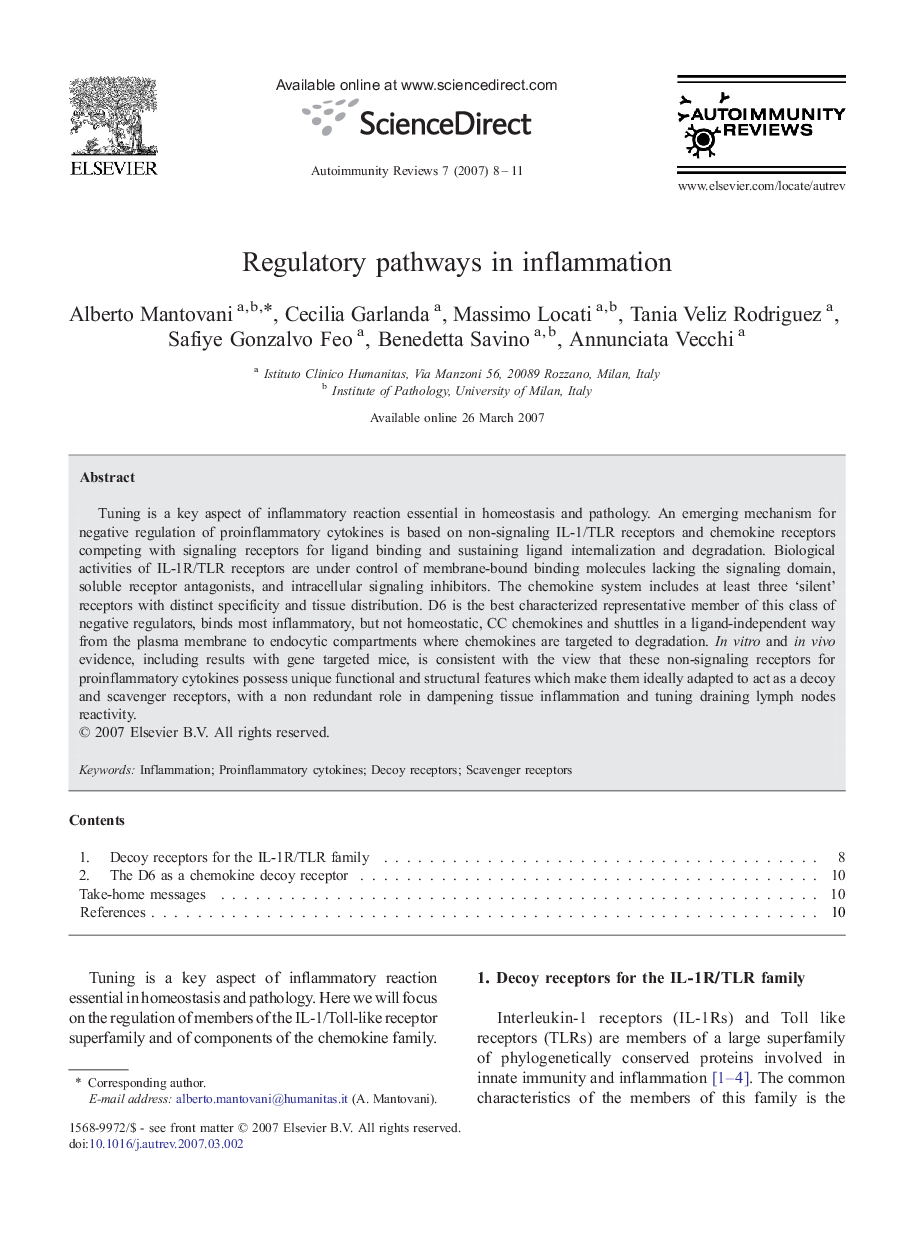| کد مقاله | کد نشریه | سال انتشار | مقاله انگلیسی | نسخه تمام متن |
|---|---|---|---|---|
| 3342468 | 1214288 | 2007 | 4 صفحه PDF | دانلود رایگان |
عنوان انگلیسی مقاله ISI
Regulatory pathways in inflammation
دانلود مقاله + سفارش ترجمه
دانلود مقاله ISI انگلیسی
رایگان برای ایرانیان
کلمات کلیدی
موضوعات مرتبط
علوم زیستی و بیوفناوری
ایمنی شناسی و میکروب شناسی
ایمونولوژی
پیش نمایش صفحه اول مقاله

چکیده انگلیسی
Tuning is a key aspect of inflammatory reaction essential in homeostasis and pathology. An emerging mechanism for negative regulation of proinflammatory cytokines is based on non-signaling IL-1/TLR receptors and chemokine receptors competing with signaling receptors for ligand binding and sustaining ligand internalization and degradation. Biological activities of IL-1R/TLR receptors are under control of membrane-bound binding molecules lacking the signaling domain, soluble receptor antagonists, and intracellular signaling inhibitors. The chemokine system includes at least three 'silent' receptors with distinct specificity and tissue distribution. D6 is the best characterized representative member of this class of negative regulators, binds most inflammatory, but not homeostatic, CC chemokines and shuttles in a ligand-independent way from the plasma membrane to endocytic compartments where chemokines are targeted to degradation. In vitro and in vivo evidence, including results with gene targeted mice, is consistent with the view that these non-signaling receptors for proinflammatory cytokines possess unique functional and structural features which make them ideally adapted to act as a decoy and scavenger receptors, with a non redundant role in dampening tissue inflammation and tuning draining lymph nodes reactivity.
ناشر
Database: Elsevier - ScienceDirect (ساینس دایرکت)
Journal: Autoimmunity Reviews - Volume 7, Issue 1, November 2007, Pages 8-11
Journal: Autoimmunity Reviews - Volume 7, Issue 1, November 2007, Pages 8-11
نویسندگان
Alberto Mantovani, Cecilia Garlanda, Massimo Locati, Tania Veliz Rodriguez, Safiye Gonzalvo Feo, Benedetta Savino, Annunciata Vecchi,